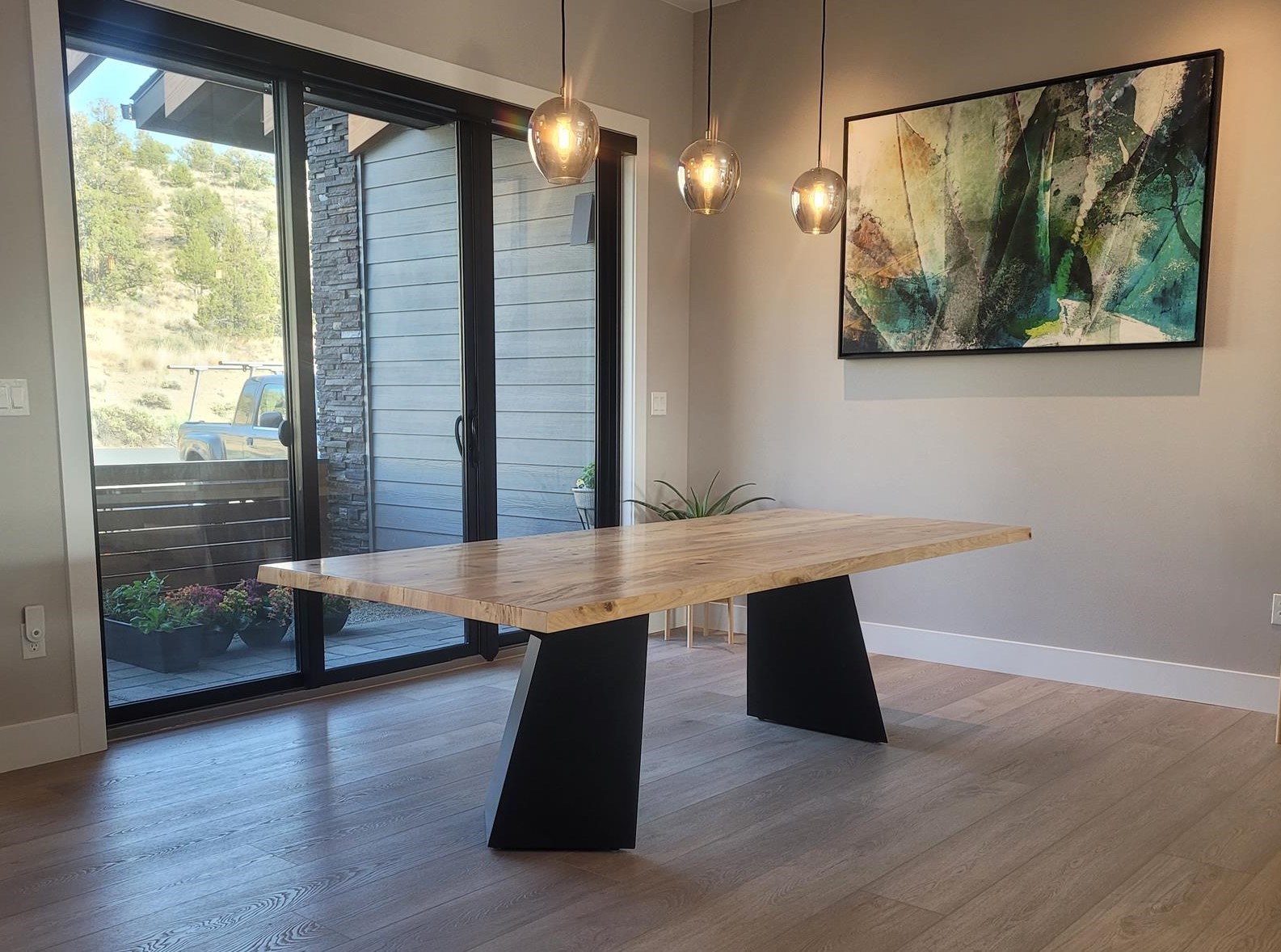How to Choose the Perfect Dining Room Table Legs for Your Home Decor
How to Choose the Perfect Dining Room Table Legs for Your Home Decor
Blog Article
An In-depth Consider Table Leg Styles: Locating the Suitable Suit
Selecting the appropriate eating table leg style is important for both visual charm and practical performance. Traditional 4 legs use ageless style and security, while the stand base supplies boosted legroom and a modern-day look. For those with bigger tables, trestle legs ensure strong support, whereas hairpin legs present a mid-century contemporary ambiance with their minimal design. The x-shaped legs mix modern style with boosted stability. Each of these alternatives brings distinct benefits, making the selection greater than just a matter of preference. Check out better to find which style completely complements your eating room and lifestyle.
Standard 4 Legs
Among the various kinds of table leg styles, the standard four-leg style stays a classic option for lots of houses. This classic configuration supplies a harmonious mix of performance and visual appeals, making it a seasonal fave. Four legs offer balanced support, guaranteeing the table stays stable and efficient in bearing substantial weight. This is especially helpful for homes that regularly organize huge gatherings or use their eating table for numerous functions, such as job or crafting.
From an aesthetic perspective, the conventional four-leg design can be easily adapted to various interior styles. Whether crafted from timber, steel, or a combination of products, these legs can be elaborately sculpted, sleek and minimalistic, or anything in between. Their adaptability permits them to match both rustic and contemporary settings seamlessly.
Additionally, the uncomplicated structure of the four-leg design assists in simplicity of activity and positioning within a room. Unlike even more facility bases, this style reduces obstructions, supplying ample legroom for restaurants. In recap, the typical four-leg dining table leg style marries withstanding beauty with useful capability, making it a sharp choice for those seeking both kind and feature in their dining furniture.
Stand Base
Often celebrated for its sophisticated and space-efficient style, the pedestal base is a recognized option to the traditional four-leg configuration in table leg designs. This distinctive base usually features a single central column supporting the table top, which can vary in kind, from ornately sculpted wood to sleek, contemporary metal. One of the main advantages of the pedestal base is its capacity to optimize legroom and seating adaptability. Without edge legs, restaurants are paid for higher flexibility of motion, making it a suitable choice for round and oval tables that promote more intimate and inclusive gatherings.
The central column itself supplies a canvas for intricate styles and imaginative expressions, including an element of aesthetic rate of interest beneath the table. In summary, the stand base integrates capability with design, making it a refined and useful alternative for varied dining environments.
Trestle Legs
Trestle legs provide a durable and ageless structure for dining tables, characterized by their straight cross-bracing and tough support beams. Stemming from middle ages times, this design has advanced yet maintained its important structure, making it a perennial favorite in both standard and contemporary setups. The central trestle light beam, commonly supported by two or even more vertical blog posts, offers exceptional security, allowing for larger table sizes without the demand for added legs.
A significant advantage of trestle leg tables is the enough legroom they use. Unlike tables with four edge legs, the absence of obstructions at the table's edges supplies unimpeded area for chairs and diners, improving convenience and ease of access. This makes trestle tables optimal for fitting larger events, whether in a dining-room or a banquet hall.
From rustic farmhouse to streamlined contemporary styles, trestle legs can be tailored to match specific tastes. Their enduring appeal and practical benefits make trestle legs a compelling choice for those looking for both style and functionality in their eating table.
Hairpin Legs

The allure of hairpin legs depends on their simplicity and adaptability - dining room table legs. Readily available in a look at more info variety of products, including steel and brass, they can be completed in various colors to complement various interior styles. Whether coupled with a rustic wood tabletop or a contemporary glass surface area, hairpin legs easily mix capability with a touch my response of vintage beauty
Sturdiness is one more remarkable function of hairpin legs. Regardless of their delicate appearance, these legs are engineered to birth considerable weight, making certain the table stays stable and secure. Furthermore, they are reasonably very easy to install, making them a preferred option for do it yourself lovers and professional furnishings manufacturers alike.
X-Shaped Legs

Constructed from materials such as steel, timber, or a mix of both, X-shaped legs can be customized to match numerous style choices. Steel legs typically lend a smooth and commercial feel, ideal for loft-style browse this site homes and modern-day eating rooms.
Additionally, the design behind X-shaped legs ensures even weight circulation, decreasing the threat of wobbling and boosting durability. This makes them especially fit for larger eating tables that call for extra support. Basically, X-shaped legs mix practical design with contemporary appearances, making them a timeless selection for diverse eating environments.
Conclusion
A detailed understanding of eating table leg designs reveals the distinct characteristics and benefits of each style. Typical 4 legs provide stability and ageless allure, while stand bases give legroom and a structured look. Trestle legs ensure durable assistance for larger tables, and hairpin legs present a mid-century modern visual. X-shaped legs incorporate contemporary design with improved stability. Selecting the ideal leg style guarantees both practical and aesthetic complete satisfaction in any kind of dining area.
Report this page